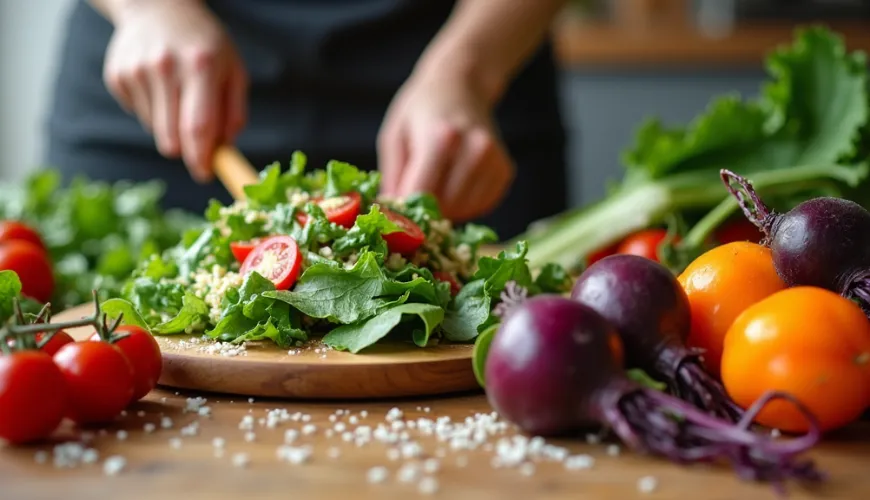
Tonkatsu sauce gives the cutlet a magic you will love.

The Secret of Japanese Tonkatsu - A Crispy Treasure from the East
When you say "řízek" (schnitzel), most Czechs immediately think of the classic pork schnitzel, breaded and fried to a golden brown. It's the heart of traditional Czech cuisine, appearing on plates in practically every household. But what if we looked beyond our borders and discovered how this beloved dish has transformed in other parts of the world? In Japan, schnitzel has found a new form called tonkatsu, and while it shares much in common with ours, it is different. Surprisingly different.
Tonkatsu is a Japanese fried pork cutlet that has captured the hearts of not only the Japanese but also gourmets worldwide. It's not just about taste but also about culture, preparation methods, and tradition. Although it has roots in Europe, the Japanese have infused it with their own soul. So how does tonkatsu taste, and why should every food lover try it?
The Japanese Art of Frying
Tonkatsu originated at the end of the 19th century during the Meiji period when Japan was opening up to the Western world and gradually adopting some European customs, including gastronomy. The inspiration for tonkatsu was most likely the Austrian Wiener Schnitzel. However, the Japanese modified it to their liking: instead of veal, they use pork, coat it in special Japanese breadcrumbs called panko, and fry it in deep oil, resulting in an incredibly crispy, light, and juicy dish.
The meat used plays a crucial role. Most commonly, pork loin with bone (rosu katsu) or without bone (hire katsu) is used, with the first variant being fattier and more flavorful, while the second is leaner and more tender. A critical step is proper preparation – the meat is lightly pounded, salted, coated in flour, beaten egg, and then in panko breadcrumbs. Panko differs from classic European breadcrumbs: it has larger flakes, is airier, and absorbs less oil when frying.
The result is a perfect golden schnitzel that crunches when sliced and remains moist inside. Tonkatsu is usually served sliced, making it easier to eat with chopsticks. And perhaps most importantly, tonkatsu sauce is never missing.
The Secret of Tonkatsu Sauce
Without the right sauce, tonkatsu wouldn't be what it is. It is a thick, dark, and aromatic sauce that tastes like a mix of Worcestershire sauce, ketchup, and tamarind. Its flavor is mildly sweet and sour, slightly spicy, and very distinctive – in short, the perfect complement to fried meat.
In the Japanese market, several types of tonkatsu sauces are available, with the most famous brand being Bull-Dog. Each manufacturer has a slightly different recipe, but the core remains the same: fruit, vegetables, spices, and vinegar. Interestingly, you can make this sauce at home, and it's not complicated. Just mix ketchup, Worcestershire sauce, soy sauce, a bit of sugar, and mustard – and voilà, homemade tonkatsu sauce is ready!
However, in Japan, tonkatsu is not just a piece of fried meat on a plate. It is a complete meal with established accompaniments. It is most commonly served with finely shredded white cabbage, a bowl of steamed rice, and miso soup. In some restaurants, you can add sesame seeds, which you grind yourself and mix with the sauce, creating an even more aromatic experience.
Tonkatsu in Various Forms
Tonkatsu in Japanese cuisine is not limited to just the schnitzel itself. This fried treasure has become the foundation for many other dishes. For instance, katsu curry, i.e., tonkatsu schnitzel served with Japanese curry, is extremely popular among the Japanese. The mildly spicy curry sauce poured over the crispy meat and served with rice creates a combination that is hard to resist.
Another variant is katsudon – tonkatsu schnitzel sliced, simmered with onions, egg, and sweet soy sauce, all placed over a bowl of rice. This dish is known in Japan as a "food talisman" – students eat it before exams because "katsu" in Japanese also means "win" or "succeed." And who wouldn't want success on their plate?
In modern gastronomy, tonkatsu also appears in sandwiches, known as katsu sando – a crispy schnitzel in soft toast bread topped with tonkatsu sauce and sometimes cabbage. This street food quickly found its way into the menus of bistros and luxury restaurants worldwide.
Can Tonkatsu Take Root in the Czech Republic?
Although the Czech schnitzel and tonkatsu share common elements, the differences in taste and preparation are so interesting that they deserve a place in Czech cuisine. In recent years, there has been an increasing interest in Japanese cuisine, beyond just sushi and ramen. Tonkatsu is an ideal entry into this culinary culture – it is familiar, yet different, and most importantly, incredibly delicious.
Imagine an autumn lunch: instead of the classic fried schnitzel with potato salad, you bring out tonkatsu, drizzle it with aromatic sauce, add a bowl of rice and shredded cabbage. You create a meal that feels exotic but is so natural and homely. Moreover, using panko breadcrumbs gives the result a lightness that the Czech schnitzel often lacks.
Experiences from Czech households that have decided to try tonkatsu confirm that this dish quickly gains popularity even among conservative eaters. "It's like schnitzel, but better," said Mrs. Jitka from Plzeň with a smile, who prepared tonkatsu for her family over the weekend. "The kids love it, and my husband even had seconds. And that never happened with vegetables," she added.
Quality Ingredients Matter
As with any other dish, the key to success with tonkatsu is choosing quality ingredients. A good pork schnitzel, ideally from an organic farm, is fundamental. Panko breadcrumbs should be fresh and free of added preservatives, and the oil for frying must be stable at high temperatures – ideally canola or peanut oil.
You can either buy tonkatsu sauce as a ready-made product from a reputable brand or make it at home from known ingredients. In both cases, the rule is: the cleaner and higher quality the composition, the more distinctive and harmonious the resulting flavor will be. And this is where we get to the heart of the matter – tonkatsu is a great example of how food can be simultaneously simple, honest, and gastronomically refined.
It's no wonder that tonkatsu is starting to appear on the menus of some Prague establishments, not just those with an Asian focus. Its versatility is also evidenced by the fact that it pairs well with Czech ingredients – for example, instead of rice, you can use mashed potatoes or roasted vegetables. So if you want to embark on a new culinary adventure, tonkatsu is the ideal choice.
"The best food is that which connects cultures," once said Japanese chef Nobu Matsuhisa. And the tonkatsu schnitzel is a shining example of how European inspiration combined with Japanese attention to detail can create something entirely new – yet so close to the human heart.

